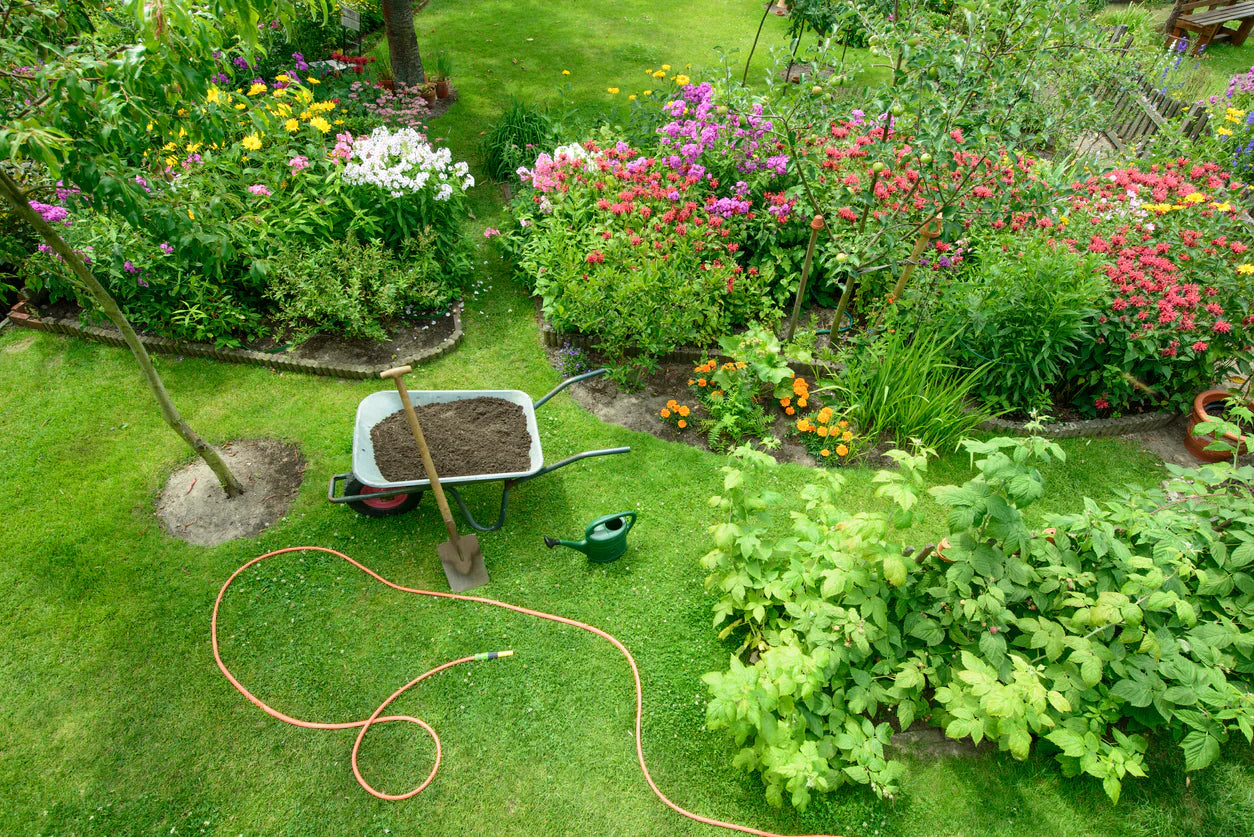Digging into Spring Gardening
April sure held true to its “April Showers” promise this year! Let’s look forward to a sunny, warmer May. Below are some important tasks and ideas to attend to in your gardens and outdoor spaces this month.
1. Get Hooked on Hanging Baskets

Beautify patios, pergolas, and porches with gorgeous, flowering hanging baskets. Hanging baskets require minimal care and will last all summer with proper care. Water them daily and feed with liquid fertilizer every 10 days to keep the blooms coming. Enjoy 10”, 12” and 16” baskets filled with a variety of sun/shade color combinations that will impress.
Tip: To encourage the development of new blooms, remove dead flowers. Your baskets will continue to look amazing!
2. Plant Edibles

Across most of the country, May is the ideal time to set out tomato plants, herbs, berries, and vegetables. Think squashes, eggplant, peppers, broccoli, strawberries, basil, rosemary, and dill. Herbs will need a sunny spot that receives at least six hours of sunlight each day. Get your edibles in the ground, raised beds, or pots this month to enjoy the fruits of your labor come summertime.
Tip: If you’ve had problems with pests or wildlife, pick up cages for your garden. Critter deterrents like Sluggo, ladybugs, and praying mantis will help prevent/control the damage.
3. Go Tropical 
You don’t need to travel to find an oasis. Plant a paradise in your backyard with gorgeous tropicals such as hibiscus, mandevilla, bougainvillea, mangave, and jasmine to name a few. Tropical plants can thrive in the Portland/Willamette Valley area if you water and fertilize regularly. Tropical plants that require full sun will need about two weeks of acclimatization. Place the container in a shady area initially and slowly move into full sun. Temperatures should consistently be above 60º F. before leaving tropical plants outdoors. Choose hardy plants that can tolerate cooler climates.
Tip: Move tropical plants indoors during frosty weather. Choose hardy plants that can tolerate cooler climates.
4. Bring On the Bulbs

In the Pacific Northwest, May is a great time to plant summer-flowering bulbs. Calla lilies, begonias, gladiolas, bareroot peonies, and dahlias present amazing blooms in the summer. Plant bulb pointy side up, root side in the ground with a 6-9-inch-deep hole. Plant them in beds, borders, or containers with good drainage and at least six hours of sunlight. In frost-free areas, these bulbs will bloom all summer and can remain in the garden year-round. Learn how easy it is to plant bulbs.
5. Prune Shrubs and Mulch

Early-flowering shrubs such as andromeda, forsythia, azaleas, and lilac can be pruned now (post-blooming) if you want to shape them. If you wait more than three to four weeks after the shrubs flower, you will remove developing flower buds for next year. Use pruning shears to trim the branches inside the shrub at various lengths for a natural look.
Keep your garden healthy by mulching with several inches of compost, pine needles, shredded bark, grass clippings, or straw. Mulch preserves soil moisture during the hot months and prevents weeds from overtaking your garden or beds. Ensure you remove weeds prior to mulching. Mulching protects the soil from sun and rain, while increasing the quality of soil in your garden.
Tip: Shredded bark and pine straw only need to be replaced every few years and are ideal for established landscapes. Flower and vegetable beds use mulch that decays quickly like grass clippings, compost, and straw. That will make it easier to add new plants each spring without digging through mulch.
So now you’re in the know! Be aware that May weather in the Pacific Northwest can be somewhat unpredictable. Monitor overnight low temperatures and protect new plants if the thermometer dips towards or below freezing. If the rain is infrequent, water those tender transplants as their roots cannot reach deep soil. At times, temperatures can climb upwards to 80°F, which tomatoes, squash, and pepper love. They don’t need frequent watering. Here is to a successful spring gardening season!

Thank you for the gardening tips
A lot of good information on planting,
Leave a comment